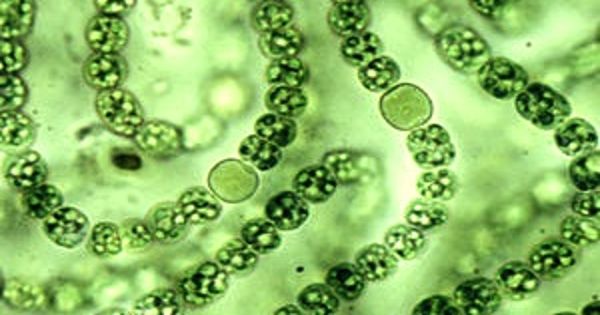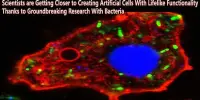Thanks to some assistance from microscopy and zebrafish, researchers can now see single blood stem cells in high resolution for the first time.
Researchers from the Universities of Wisconsin-Madison and California-San Diego have created a technique that enables them to follow a single blood stem cell in a living organism and then, using electron microscopy, describe the ultrastructure or architecture of that same cell. This novel approach will help scientists create new cancer and blood disease treatments.
“Currently, we look at stem cells in tissues with a limited number of markers and at low resolution, but we are missing so much information,” says Owen Tamplin, an assistant professor in UW-Madison’s Department of Cell & Regenerative Biology, a member of the Stem Cell & Regenerative Medicine Center, and a co-author on the new study, which was published Aug. 9 in eLife. “Using our new techniques, we can now see not only the stem cell but also all the surrounding niche cells that are in contact.”
The blood stem cells that support the blood system are found in the niche, a microenvironment that can be found in tissues like the bone marrow. Every second, specific interaction between blood stem cells and their surrounding cells take place in the niche, but it is difficult to monitor and understand these interactions.
In the latest study, Tamplin and Mark Ellisman, a professor of neuroscience at the University of California, San Diego, discovered a way to combine various kinds of microscopic imaging to look into a cell’s niche.
Researchers will now be able to follow the hitherto elusive cell-cell interactions taking place in this area thanks to the newly developed approach that uses confocal microscopy, X-ray microscopy, and serial block-face scanning electron microscopy.
“This has allowed us to identify cell types in the microenvironment that we didn’t even know interacted with stem cells, which is opening new research directions,” Tamplin says.
Transplanted blood stem cells are used as a curative therapy for many blood diseases and cancers, but blood stem cells are very rare and difficult to locate in a living organism. That makes it very challenging to characterize them and understand how they interact and connect with neighboring cells.
Owen Tamplin
Dopamine beta-hydroxylase positive ganglia cells, a hitherto uncharacterized cell type in the blood stem cell niche, were discovered by Tamplin and his colleagues in this study, including co-first authors Sobhika Agarwala and Keunyoung Kim. This is important because better therapies may result from knowing how neurotransmitters like dopamine control blood stem cells.
“Transplanted blood stem cells are used as a curative therapy for many blood diseases and cancers, but blood stem cells are very rare and difficult to locate in a living organism,” Tamplin says. “That makes it very challenging to characterize them and understand how they interact and connect with neighboring cells.”
The zebrafish larva, which is transparent, provides researchers with a unique opportunity to observe the inner workings of the blood stem cell niche more clearly. Blood stem cells are difficult to find in most live species.
“That’s the really nice thing about the zebrafish and being able to image the cells,” Tamplin says of animal’s transparent quality. “In mammals, blood stem cells develop in utero in the bone marrow, which makes it basically impossible to see those events happening in real time. But, with zebrafish you can actually watch the stem cell arrive through circulation, find the niche, attach to it, and then go in and lodge there.”
While blood stem cell development is easy to observe in the zebrafish larva, specialized imaging is required to locate these tiny cells and subsequently detail their ultrastructure. Over the course of more than six years, Tamplin and his associates honed these imaging methods.
They were subsequently able to use electron microscopy to focus even closer on the same cell while watching the formation of a blood stem cell in real-time within the microenvironment of a living organism.
“First, we identified single fluorescently labeled stem cells by light sheet or confocal microscopy,” Tamplin says.
“Next, we processed the same sample for serial block-face scanning electron microscopy. We then aligned the 3D light and electron microscopy datasets. By intersecting these different imaging techniques, we could see the ultrastructure of single rare cells deep inside a tissue. This also allowed us to find all the surrounding niche cells that contact a blood stem cell. We believe our approach will be broadly applicable for correlative light and electron microscopy in many systems.”
Tamplin aims to apply this strategy to numerous other stem cell types, including those in the gut, lung, and tumor microenvironment, where it is necessary to define rare cells at the nanometer scale. But Tamplin is particularly eager to explore how this work will advance our knowledge of how the blood stem cell milieu develops because she is a developmental biologist.
“I think this is really exciting because we generate all of our blood stem cells during embryonic development, and depending on what organism you are, a few hundred or maybe a few thousand of these stem cells will end up producing hundreds of billions of new blood cells every day throughout your life,” Tamplin says.
“But we really don’t know much about how stem cells first find their home in the niche where they’re going to be for the rest of the life of the organism. This research will really help us to understand how stem cells behave and function. A better understanding of stem cell behavior, and regulation by surrounding niche cells, could lead to improved stem cell-based therapies.”
















